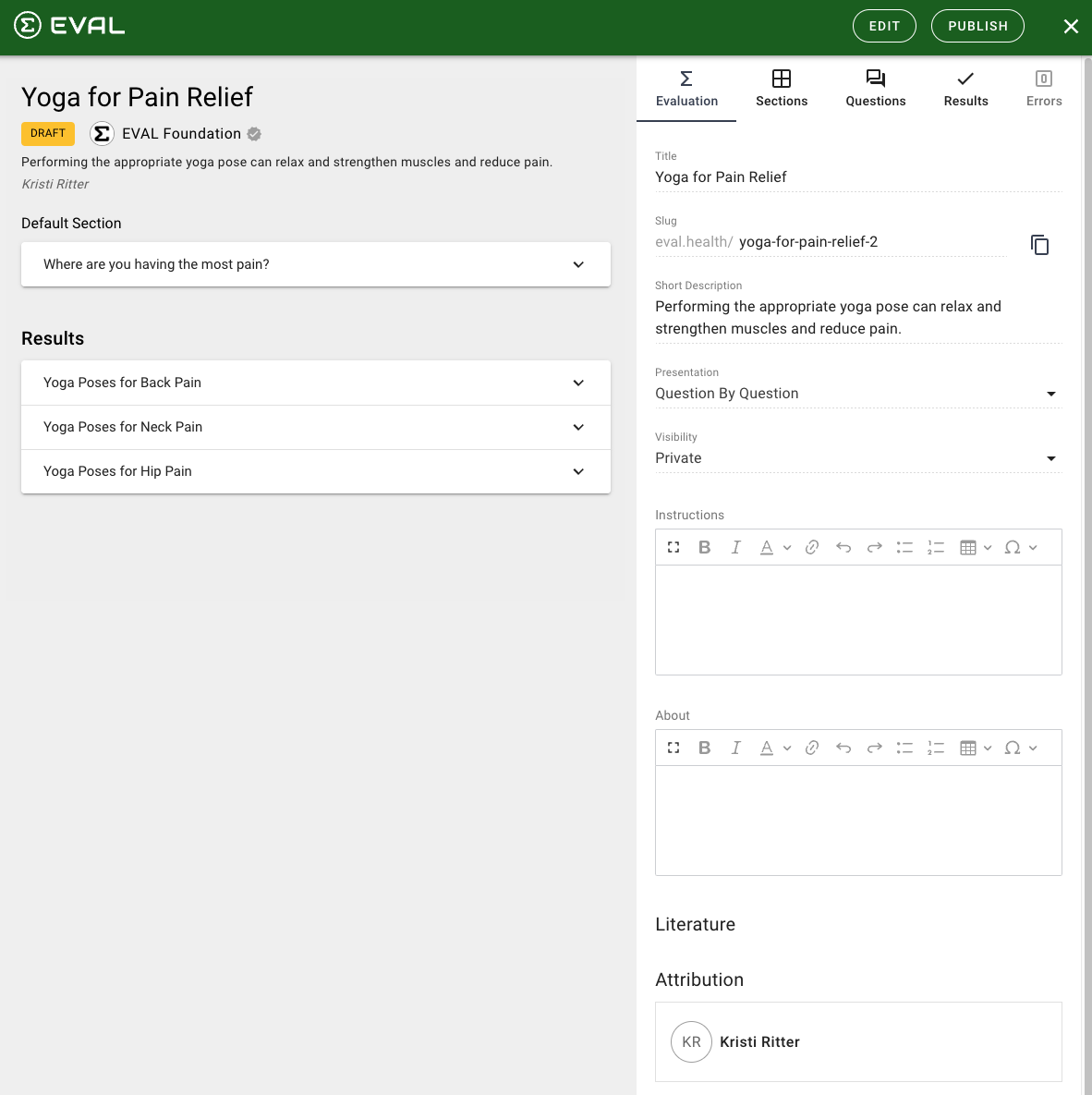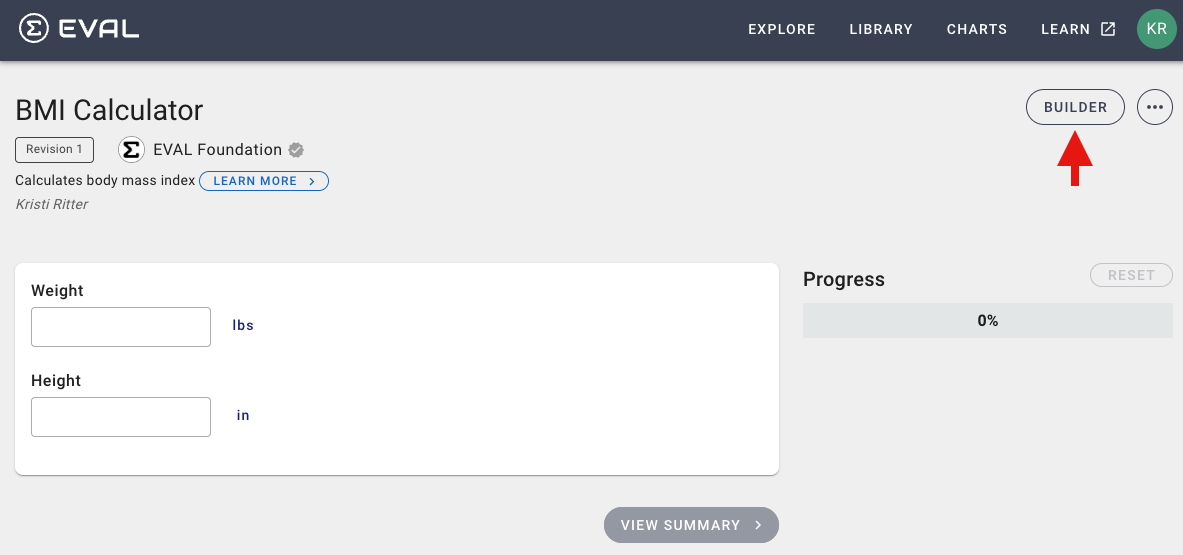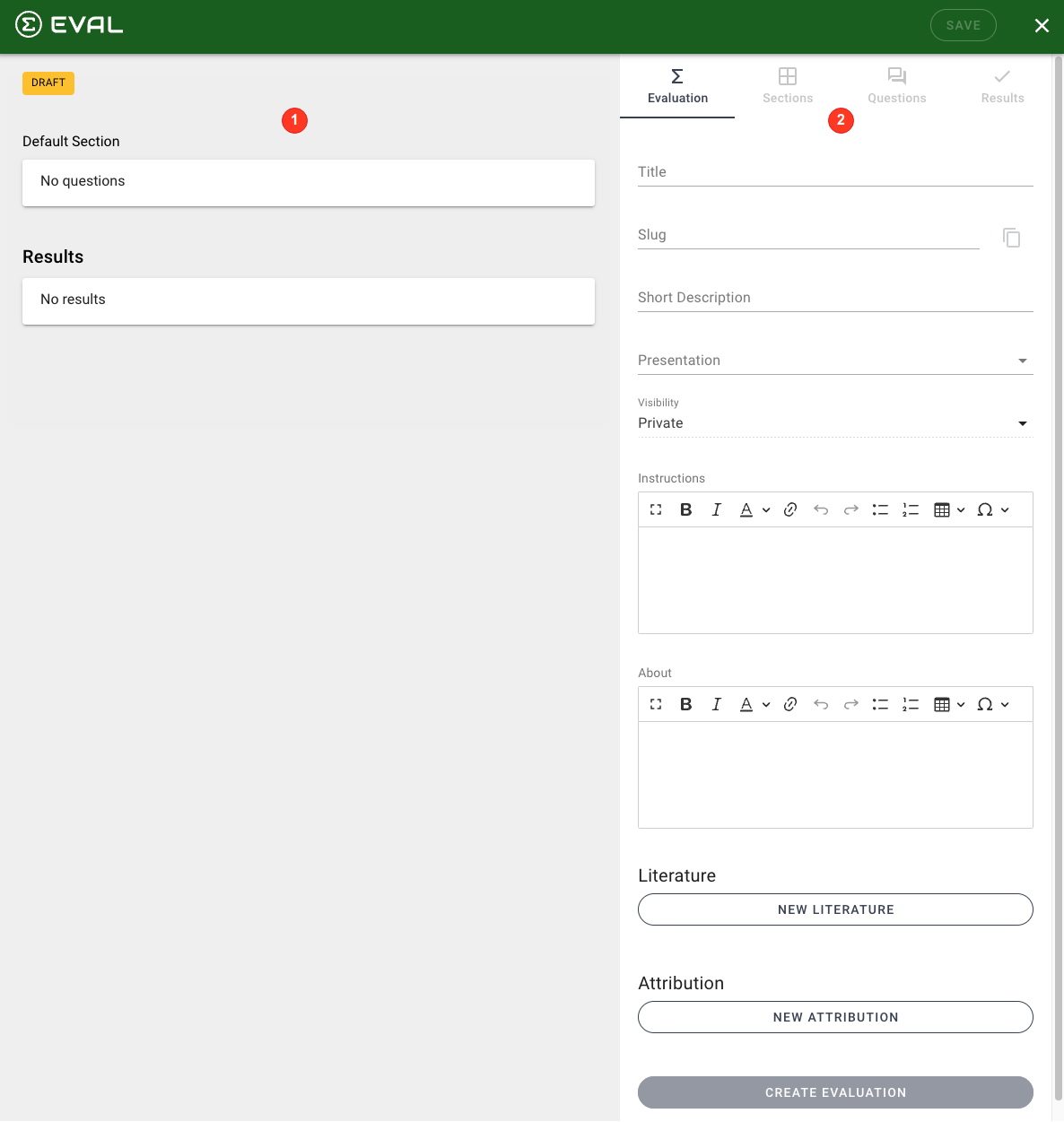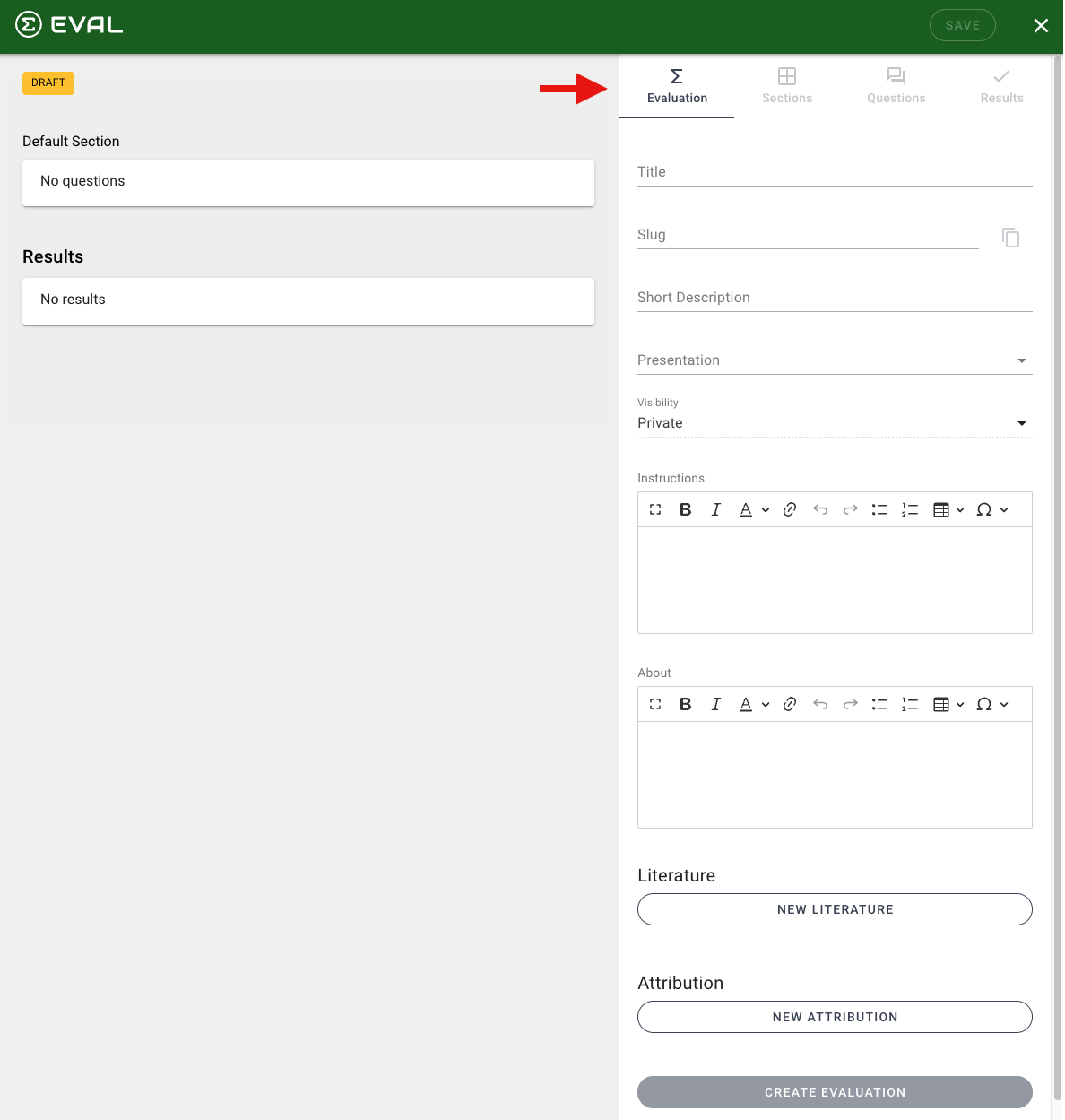Intro to Builder

Builder Overview
As a citizen developer, the Builder is an EVAL feature that provides a low-code and no-code (LCNC) set of tools that enable you to develop a custom decision-based workflow that will run in the EVAL player. The LCNC tools allow you to craft questions (numeric or choice responses) and results that respond to a visibility rules engine or spreadsheet-based formulas and conditional computations. For more information and examples see sections on Logic and Design.
These simple but powerful tools automate the user experience and support a dynamic set of decisions and a logical series of intelligent computations and recommendations. Additionally, the media features will bring your custom workflow to the next level. Embedding images, YouTube videos and website links within questions and results provides opportunities for knowledge transfer and training applications.
Leveraging the power of the EVAL platform to translate evidence-based research, distribute best practices and monitor outcomes is immense. Calculators, decision trees, intake questionnaires, training modules, assessment guides, and clinical / research protocols are just a few examples of what to explore on the EVAL platform.
The EVAL “app builder” intuitively guides citizen developers as they convert clinical protocols, workflows, guideline recommendations, calculations and educational resources into digital decision support tools. In Builder mode, the GUI is organized by sections, questions and results. Data can be defined as a “question,” “choice,” or “result” and given a unique label or title. EVAL platform features can be used to augment data qualities, build data relationships, perform calculations and demonstrate logic accuracy. Features include the ability to:
- Select question format as a number, select one or multiple choice
- Assign a formula value to a choice
- Set up multiple unit conversions for a choice
- Select result input format as informational or a calculation computation
- Program a result to perform calculations using:
- Keywords to identify select data
- Named expressions that serve to break up large formula expressions into smaller expressions with easy-to-read labels
- Spreadsheet-based formulas
- Create detailed descriptions with text box editing features for sections, questions and results
- Add multi-media images, YouTube videos and web links to any section, question or result
- Create visibility rules (if-then conditions) for questions, choices and results to automate decision tree logic and results by:
- Selecting from your data library of sections, questions, choices or results
- Creating a formula using:
- Keywords to identify select data
- Named expression that serve to break up large formula expressions into smaller expressions with easy-to-read labels
- Spreadsheet-based formulas
- Demonstrate accuracy of your logic and calculations by create automated test scenarios for each result
Any EVAL user using an app can switch to the Builder mode and inspect every feature detail of the author's work. However, only an authorized app author can edit an app. Additionally, every EVAL user will have access to an app's revision history. Apps can be updated, deprecated or cloned. Users will be able to trace authorship, revisions and see author’s update notes. Additionally, if an app revision has been deprecated, users will be notified that the app is no longer available and have the option to bookmark a newer version in their library of apps.
To learn more about the EVAL app features, navigate to the Benefits page.
Accessing Builder
You enter Builder in one of the following ways:
Either by clicking New App on the Library page to create a new application:

Or by clicking into an existing application in Library and click Builder to view or modify it (Note: You can only edit an application if you are the creator or a collaborator with editing rights):

Header Navigation
Once you are in Builder, the green header at the top of the page turns green and provides you options depending on the state of the application.
Save

The Save option appears and is clickable when:
- All required fields on the Applications tab have been provided for a new application
- Anytime you have made changes to a previously saved application
The Save action triggers the revision interface.
Edit

The Edit option appears and is clickable when you enter Builder from an existing application.
Note that certain features, such as Danger Zone, will not appear on the page unless you are in Edit mode.
Publish

The Publish option appears and is clickable when you have saved an application that does not have errors.
It is only necessary to publish an application that you want to share with others - either those within your account or by making the application public to all EVAL users.
Close
The Close option ("X") always and is clickable to close out without saving. You will be navigated back to the Library.
Outline and Details Panes
The Builder component has two important panes:

- The Outline Pane (left side) highlights key areas of your application and displays content as you it out. You can also click any area to expand more detail and add content in the detail pane.
- The Details Pane (right side) displays all of the details needed to build out your application. It contains several tabs (Applications, Sections, Questions, and Results) that are further described below.) The detail pane also responds to any area you click on in the outline pane
Up to five tabs will be displayed at any given time (the first four are outlined below):

- Evaluation - provide high-level details about the application, such as the name and slug
- Sections - create logical groupings within your application of like content
- Questions - build out your application questions and valid entries for the questions, to include numerical entries or choice options
- Results - build out your application results
- Errors - displays when you have errors that must be resolved before publishing
Navigate to the Applications page to start learning more on creating applications.
Updated about 1 year ago
